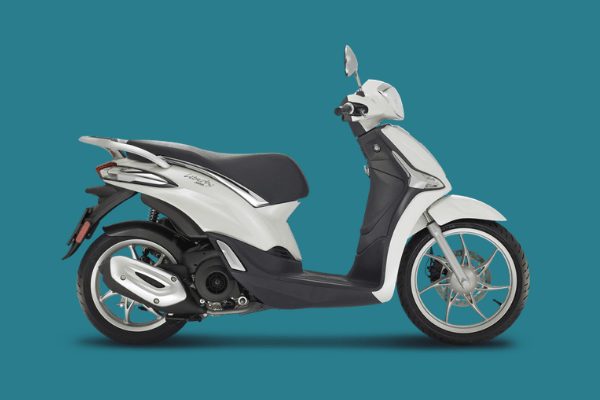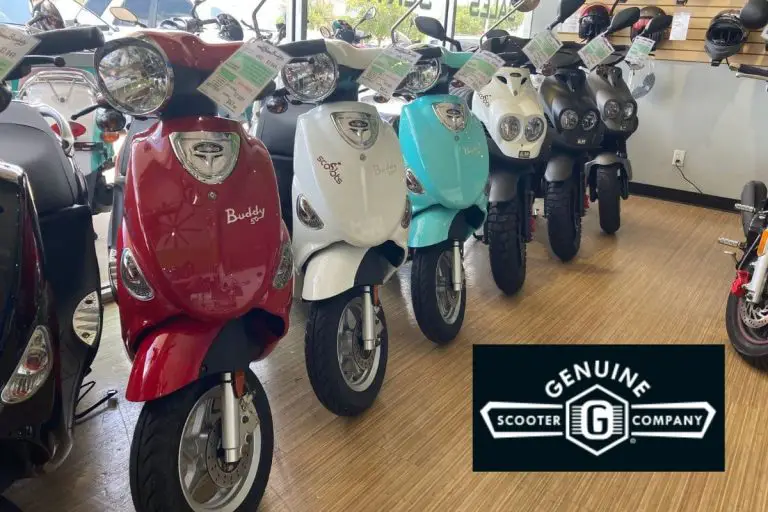If you’re in the market for a new commuter vehicle, you might be considering something like a Vespa. Motor scooters like Vespas are great for city driving. They’re small and easy to maneuver, they have good fuel economy, and they’re stylish (and fun to ride).
However, if you’re considering a new vehicle to use as a daily driver, reliability and maintenance costs are two of the most important things to consider. If your scooter keeps breaking down, it will not only be more expensive to fix but also a considerable inconvenience for you.
So, what is the reliability of Vespas actually like?
In general, Vespa branded scooters are not particularly high maintenance when compared to other reputable scooter brands. They offer a 24 month, unlimited warranty new and follow a traditional scooter maintenance schedule.
We’ll be taking a look at how much maintenance Vespas need, how much this maintenance costs, and what you yourself can do to help maintain your Vespa’s condition.
Are Vespas Reliable?
The general consensus among Vespa owners is yes, Vespas are pretty reliable.
You have to maintain your Vespa properly to get this reliability, but if you do, you should find that your Vespa will last you a long time.
Part of the reason why Vespas are pretty reliable has to do with their simple yet robust construction. Every Vespa is built on a steel frame, which makes them heavier than other scooters but also a lot more durable.
Vespas are small, uncomplicated vehicles without a ton of different features, and the fewer features a vehicle has, the less likely it will be that something breaks.

Are Vespas Expensive to Maintain?
Being that Vespa is a “premium” scooter brand, you’ll find that maintaining a Vespa will probably be more expensive than maintaining a scooter from another brand. That being said, maintaining a Vespa isn’t really all that expensive in general regardless of the engine size of the Vespa you choose.
Vespa is a large company producing scooters for over 75 years at this point, and as such it’s usually fairly easy to obtain whatever parts you need to keep your scooter in running condition.
Because parts are plentiful, they’re usually not too expensive as well.
If you’re just doing basic maintenance activities like oil changes and replacing filters, you can expect yearly maintenance costs to be around $100 or less.
The overall cost can be kept low if you are mechanically inclined & less reliant on scooter shops. More advanced maintenance like a drive belt replacements and tire changes (especially the rear) at a scooter shop will be more costly but not out of line of what can be expected for any scooter.
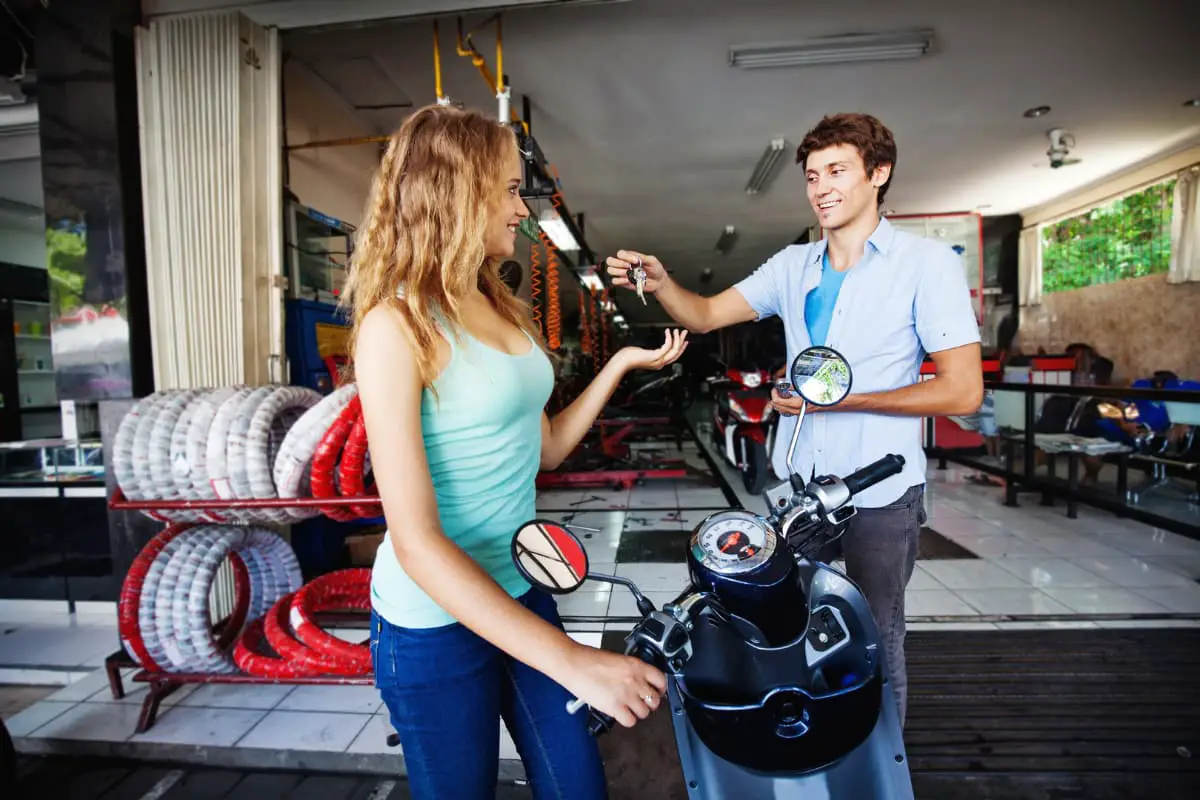
An example, my first service on a Vespa GTS was $200. The first service on the Kymco AK550 was $400. Both scooters were in the same initial price range, but the service aspect was higher for that Kymco.
And as your Vespa ages, the popularity of vintage Vespa scooters means that parts remain available to you for years. Aftermarket part manufacturers are also available which I can not say as much about the Kymco scooters we also have purchased.
Of course, things can get more expensive depending on what needs to be fixed. An oil change is easy & cheap & normal for all scooters.
However, if you need to have any of the bodywork on your Vespa repaired, you can expect to pay quite a bit more for this compared to another scooter. This is because Vespas use painted metal body panels as opposed to plastic ones.
This is the biggest complain (beyond the initial premium price) about Vespa motor scooters – body work. I will say there are some that consider a few dents & dings to be part of an older Vespa’s charm.
With all of this said, Vespas aren’t that expensive to maintain overall, provided you perform the necessary maintenance at the right intervals.
How Much Maintenance Does a Vespa Need?
We’ve talked about the cost of maintaining a Vespa, but how much maintenance does a Vespa actually need? Are they the sort of thing that needs a lot of attention, or will they work fine even after neglecting them?
As it turns out, Vespas need about the same amount of maintenance as most cars do, although the exact maintenance schedule depends on the kind of Vespa you have. The newest Vespas allegedly don’t require as much regular maintenance as the older ones do.
So exactly how frequently should you service your Vespa? According to Vespa’s official maintenance schedule for 250/300 cc scooters, older Vespas should be serviced every 3,000 miles while newer Vespas only need to be serviced every 6,000 miles.
Even if you’re riding your Vespa for less than 3,000 miles a year, you should still have it serviced annually at the very least if you want to keep it running well.
Here is a snapshot from the schedule in the Vespa GTS 300 hpe owners manual which is VERY similar to the Kymco & Genuine maintenance manuals.
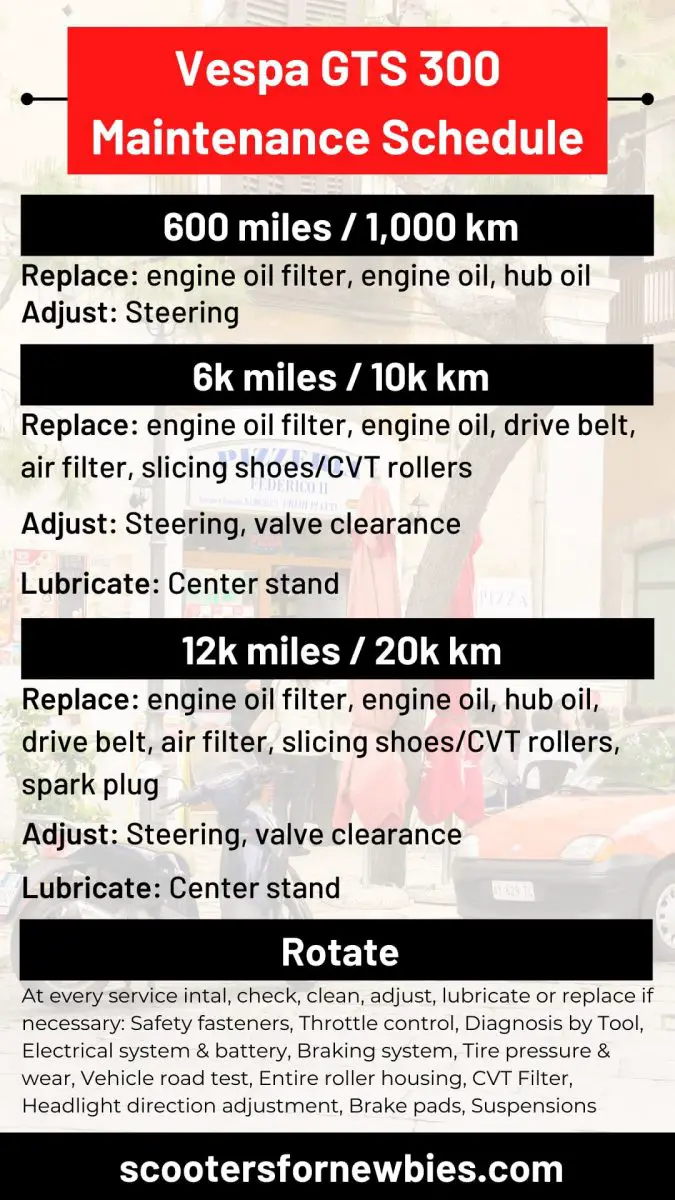
Vespa Maintenance Tips
Now, let’s talk about how to actually maintain your Vespa. This is by no means a comprehensive list of everything you should do to keep your Vespa running well, but it is a list of some easy yet important maintenance tasks you can do.
You can certainly take your Vespa to a shop to get your service done, but if you know how to do it yourself you can potentially save yourself a good chunk of money. Here’s what you should do in order to maintain your Vespa:
Keep It Clean
Believe it or not, just taking some time to regularly clean your Vespa can help it last quite a bit longer. You might be thinking that a little bit of dirt and grime wouldn’t hurt your Vespa too much, but you’d be surprised.
If you leave dirt and road grime on your Vespa for too long, it can start to degrade the bodywork and cause corrosion. Depending on what part of the country you live in and what time of the year you’re riding, you might also have stuff like road salt to contend with. Road salt residue can cause rust to develop like crazy on your Vespa.
To properly clean your Vespa, all you need is some warm water, a rag, and a suitable cleaning solution. Just make sure when washing your Vespa not to get any water in places it shouldn’t, like the air filter, ignition switch, and spark plug.
Check Your Tire Pressure
Just like with a car, it’s always a good idea to periodically check your Vespa’s tire pressure. Making sure your tires are properly pressurized and in good shape will not only make riding your Vespa safer but will also help with your fuel economy & reduce the frequency of new tires from not being inflated properly.
If you don’t already know, an underinflated tire experiences way more wear and tear than a properly inflated one, because the low pressure inside the tire vastly increases the contact patch of the tire on the road. The more worn-out your tire gets, the more likely it will fail on you while you’re riding.
Underinflated tires also increase the rolling resistance of your Vespa, meaning the engine has to work a lot harder to maintain the same speeds as you’d get with properly inflated tires. This can end up having a pretty significant negative effect on your fuel economy.
If you’re unsure what the tire pressure should be on your Vespa, check your owner’s manual or the wall of the tire as it should have all of that information available for you.
You don’t want to go beyond that max pressure either!
Check Your Oil and Other Fluids
Your Vespa uses a variety of fluids to keep itself running. One of the most important fluids is engine oil, but other vital fluids include coolant, transmission oil, and brake fluid. Not all of these fluids need to be changed as often as the engine oil, but you should definitely check them periodically just to be safe.
During the first year you own your Vespa, you should change the oil a little more often than normal as the engine will be breaking itself in. You should change your oil twice within the first year, but afterwards you should only have to change your oil once every year or two.
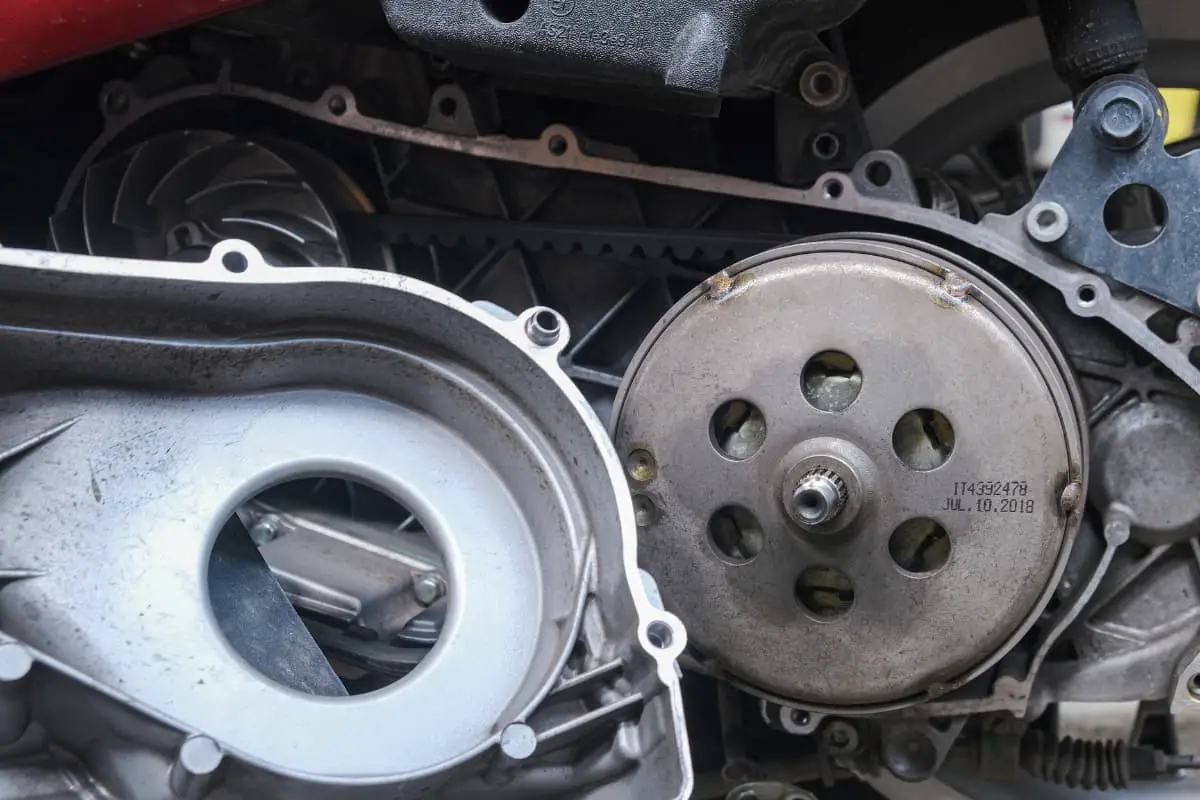
Check Your Spark Plug
The spark plug is what ignites the air/fuel mixture in your Vespa’s engine, but it needs to be clean to do its job properly. You should check your spark plug fairly regularly, about every 500-600 miles or so. If it’s a little bit dirty, you can clean it with a wire brush, but if it’s really dirty you should replace it.
Cover It From Sunlight
The last thing you should do to help preserve your Vespa’s longevity is to park it in the shade whenever you can. Excessive moisture and sunlight can damage many of your Vespa’s components over time, so keeping it out of direct sunlight and rain can help keep it running for longer.
A garage is always best for this purpose, but if you don’t have access to one, a cover for your Vespa will also get the job done.
Store your Vespa well
If you will not be riding for long periods, you should definitely either drain fluids, use a fuel stabilizer, and connect a battery tender charger to the battery. Storing your scooter properly (2-stroke engines or 4-stroke engine) will make sure that when you’re ready to get going, you can do just that.
If you do not keep the scooter charged it will make your Vespa have a shorter battery life which increases what you’re expected to spend & the long-term ownership costs.
Particularly if you have a carbureted Vespa, having the carburetor cleaned can be costly or just a nuisance if you’re capable of doing it yourself.


